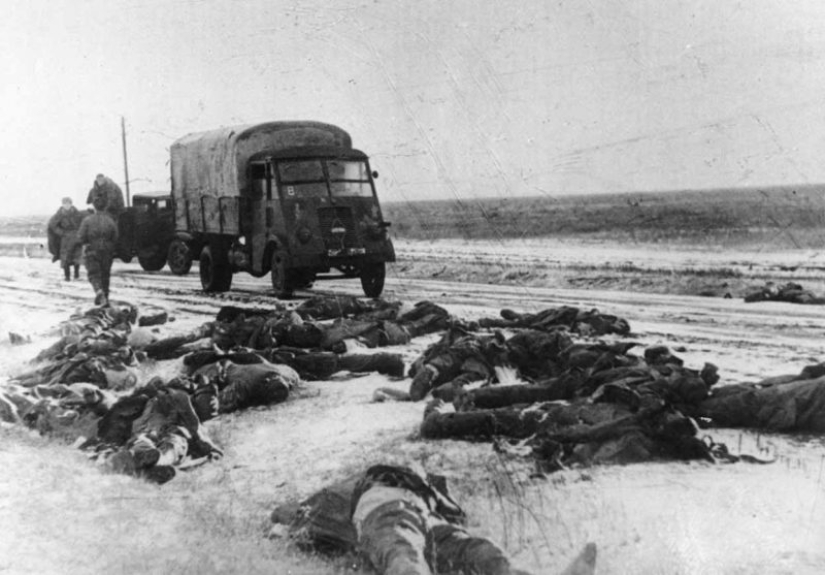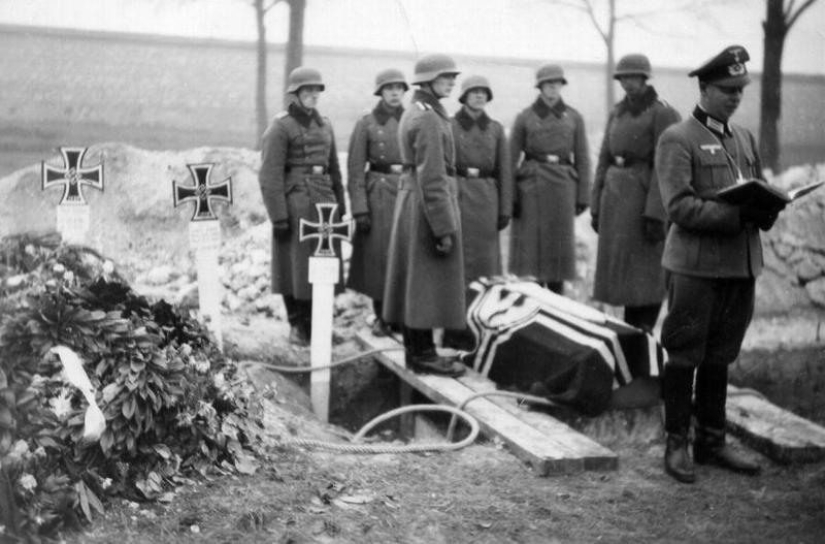"They buried as many soldiers as could fit in the hole": about the differences between German and Soviet graves
Categories: History | Society | World
By Pictolic https://pictolic.com/article/they-buried-as-many-soldiers-as-could-fit-in-the-hole-about-the-differences-between-german-and-soviet-graves.htmlUnfortunately, during the war, it was rarely possible to hand over the bodies of the dead to their relatives. During particularly intense clashes, even being buried, and not just left on the battlefield, was considered a great luxury. However, Soviet and German soldiers still had their own funeral rituals, which they tried to adhere to if possible. This is what we want to talk about in our article.

On March 15, 1941, People's Commissar of Defense Semyon Timoshenko signed an order "On the procedure for burying fallen military personnel of officer, sergeant, and private staff." It described in detail the procedure for burying Soviet soldiers and officers. For example, the directive stated that it was mandatory to remove the dead from the battlefield for subsequent burial, regardless of the current situation. In other words, even if the enemy is actively firing, soldiers are required to remove the body of their comrade from the site of shelling and hand it over to a special burial team.

According to the recommendations, the grave had to be located in a dry area. If it was a city, priority was given to cemeteries, parks and squares. In other cases, groves, crossroads and burial mounds were considered the most suitable places.
Soldiers were supposed to be placed in coffins in underwear, tunics, trousers and shoes. The grave had to be at least 1.5 meters deep and have an identification mark indicating the soldier's personal data: name, rank, date of birth and death.

The regulations did not specify the procedure for rendering military honors, but the regiment commander could establish them independently.
According to the terms of the document, Red Army soldiers could be buried in either individual or mass graves. As for officers, their bodies had to be handed over to Red Cross employees, who would organize further transportation to relatives. If this could not be done, officers were buried on site, but they were required to find peace in individual graves.

It was not always possible to adhere to the directive. At the beginning of the war, under the pressure of the Wehrmacht, Soviet soldiers were forced to leave their positions in a hurry, so there was usually not enough time to carry out the burial procedure as required by the regulations.
In the book "War - Accelerated Life" by Konstantin Somov, the memoirs of surviving soldiers are described, who claim that being buried in the earth at that time was already considered a great success. In the best case, the dead were buried in bomb craters, ravines and even trenches, in the worst case - left on the battlefield.

The German rules were somewhat different from the Soviet ones. For example, all soldiers, regardless of their rank and length of service, were supposed to be buried with full honors - with an individual grave, a coffin covered with a military flag, a funeral procession and a musical orchestra.
After the funeral ceremony, a wreath with the inscription "Armed Forces of Germany" was placed on the grave. The wreath was also decorated with two red ribbons: one with an Iron Cross, the other with a swastika. With such a pompous burial procedure, the authorities wanted to emphasize that they highly valued the contribution of soldiers to the triumph of Nazism.

The reality was that the Germans, like the Soviet military, despite the well-coordinated work of the funeral services and their innate pedantry, did not have time to strictly follow all the prescribed rules. Only at the initial stages of the war did they follow the instructions, but when the situation on the Eastern Front changed, adjustments were forced to be made to the burial ritual.
According to Corporal Helmut Klausmann, "the dead were buried as best they could." If possible, individual graves were dug for the dead soldiers and they were placed in coffins. When the fighting was particularly tough, the dead were wrapped in cloaks or tarpaulins and simply placed in the holes left by the shell explosions.

As you can see, the Soviet and German sides did have something in common. In conditions when the frost gripped the earth, bullets whistled overhead and it was unknown what lay ahead, few would think about observing complex funeral rules.
Recent articles

Most of us think that the color of the eggshell does not play any role and it is possible not to pay attention. But it's not and ...

The more we rely on technology, the more potential power hackers gain over us. It doesn't matter if their goal is to help or cause ...

Creating a good portrait is one of the most difficult tasks for any photographer. In order to make a really natural and memorable ...